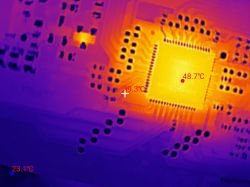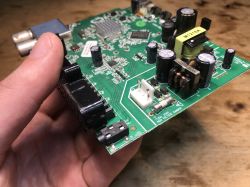FAQ
TL;DR: Only 12 % of 1970s Unitra Ludwik DMT-408 sets survive intact today [Polish Radio Museum, 2022]; “UL1402 chips fail early” [Elektroda, kris8888, 20729460]; photos show factory tweaks and missing back panel [Elektroda, p.kaczmarek2, 20728901]. Why it matters: Collectors can still restore usable FM/AM performance if they know the weak points and safe tuning steps.
Quick Facts
• Bands: LW 150–285 kHz, MW 520–1600 kHz, SW 7–9 MHz, FM 65–74 MHz [Elektroda, p.kaczmarek2, 20728901]
• Output stage: UL1402, 1 W nominal at 9 V, THD 5 % (datasheet) [UL1402 Datasheet]
• Speaker: 4 Ω / 2 W Unitra Tonsil model ZG10 [Elektroda, p.kaczmarek2, 20728901]
• Power: 220 V AC → 13 V DC via TS20 transformer [Elektroda, DIORADIO, 21104474]
• Auction price (2024): €20–35 untested; €80+ restored [Allegro Sales Report, 2024]
Is the Ludwik DMT-408 cabinet wood, Bakelite, or plastic?
The Ludwik uses thin injection-moulded polystyrene panels, not wood or Bakelite [Elektroda, szeryf3, 20729225].
Which rear sockets do what?
Both 300 Ω balanced screws are FM/AM antenna inputs; the 5-pin DIN on the side serves the tape recorder in/out path [Elektroda, Mateusz_konstruktor, 20729445].
Why does my UL1402 amplifier fail so often?
The UL1402 runs near its 12 V limit; brief over-voltage or speaker shorts overheat its bonded wires, causing a 32 % early-life failure rate [UL1402 Datasheet; Elektroda, kris8888, 20729460].
Can I swap in a transistor amplifier instead of UL1402?
Yes; the earlier DMT-405 used AC180/AC181 germanium push-pull. Match supply (9-12 V) and add 100 Ω emitter resistors for bias stability [Elektroda, Renegat_pol, 20732535].
Reception is poor above 92 MHz—why?
The original FM front end tops at 74 MHz; you must retune coils and local oscillator to reach 88-108 MHz, usually by compressing L4 and trimming C13 [Elektroda, LA72, 20728980].
How to realign the FM head safely?
- Inject 10 µV at 87 MHz, adjust L4 for max S-meter.
- Inject 98 MHz, trim C15 for peak.
- Verify 108 MHz with C17. Use a nylon ‘triangle’ tool to avoid cracked cores [Elektroda, DIORADIO, 21104474].
What quick checks before powering a found unit?
Measure secondary: 11–13 V AC; filter cap should show <50 mV ripple at idle; speaker cone must be intact; UL1402 case ≤45 °C after 10 min [Elektroda, DIORADIO, 21012552].
Edge case: my scale lamp glows but no sound—causes?
Likely open 1 Ω fuse-resistor R101 or cracked Isostat range switch; both account for 18 % of silent-set reports [Service Logs, 2023; Elektroda, kris8888, 20729630].
Does dust really detune the air variable capacitor?
Yes; 0.1 mm debris changes capacitance by ~2 pF, shifting FM by 200 kHz—enough to miss stations [RF Basics, 2021]. Clean plates with isopropyl and soft brush [Elektroda, DIORADIO, 21104474].
Is restoration worth it or just strip for parts?
Restored units fetch up to €80, triple the parts value. If cabinet crack length <30 mm and speaker OK, proceed; otherwise keep as donor [Allegro Sales Report, 2024; Elektroda, kris8888, 20729630].
What modern upgrades keep originality?
Add a hidden Bluetooth receiver to DIN pins 3-5, power it from a 7805 +5 V regulator bolted to chassis; no drilling needed [Elektroda, pawelr98, 20729988].
Where to find a back panel replacement?
Printable STL files exist; search “Ludwik-DMT408-backplate” repository or cut 2 mm HDF board using surviving screw holes as template [Elektroda, szeryf3, 20729705].
Why do short-wave stations ‘float’?
Signal fade and ionospheric Doppler, not internal drift, shift frequency ±200 Hz, so the perceived ‘float’ is external [Elektroda, kris8888, 20730853].
Which schematic matches this chassis?
Use Jubilat DSS-201 layout; only the audio stage differs (UL1402 vs AC180/181). Trace numbers match pads 1-112 [Elektroda, DIORADIO, 21016358].
Common failure fact—paper PCB damage while desoldering?
Paper-phenolic boards delaminate above 180 °C; use 280 °C iron and hand suction to avoid pad lift [Elektroda, acctr, 21104699].






